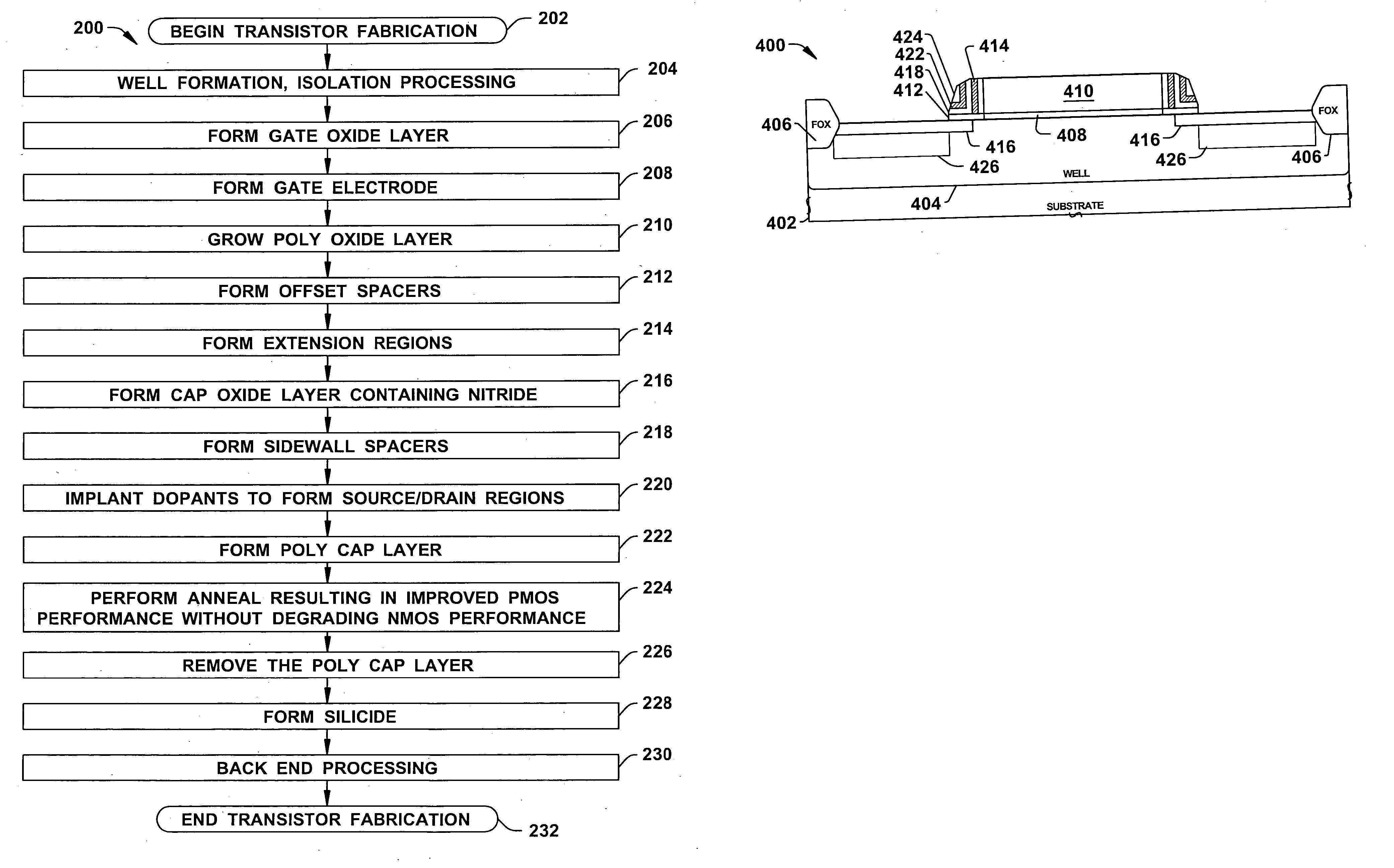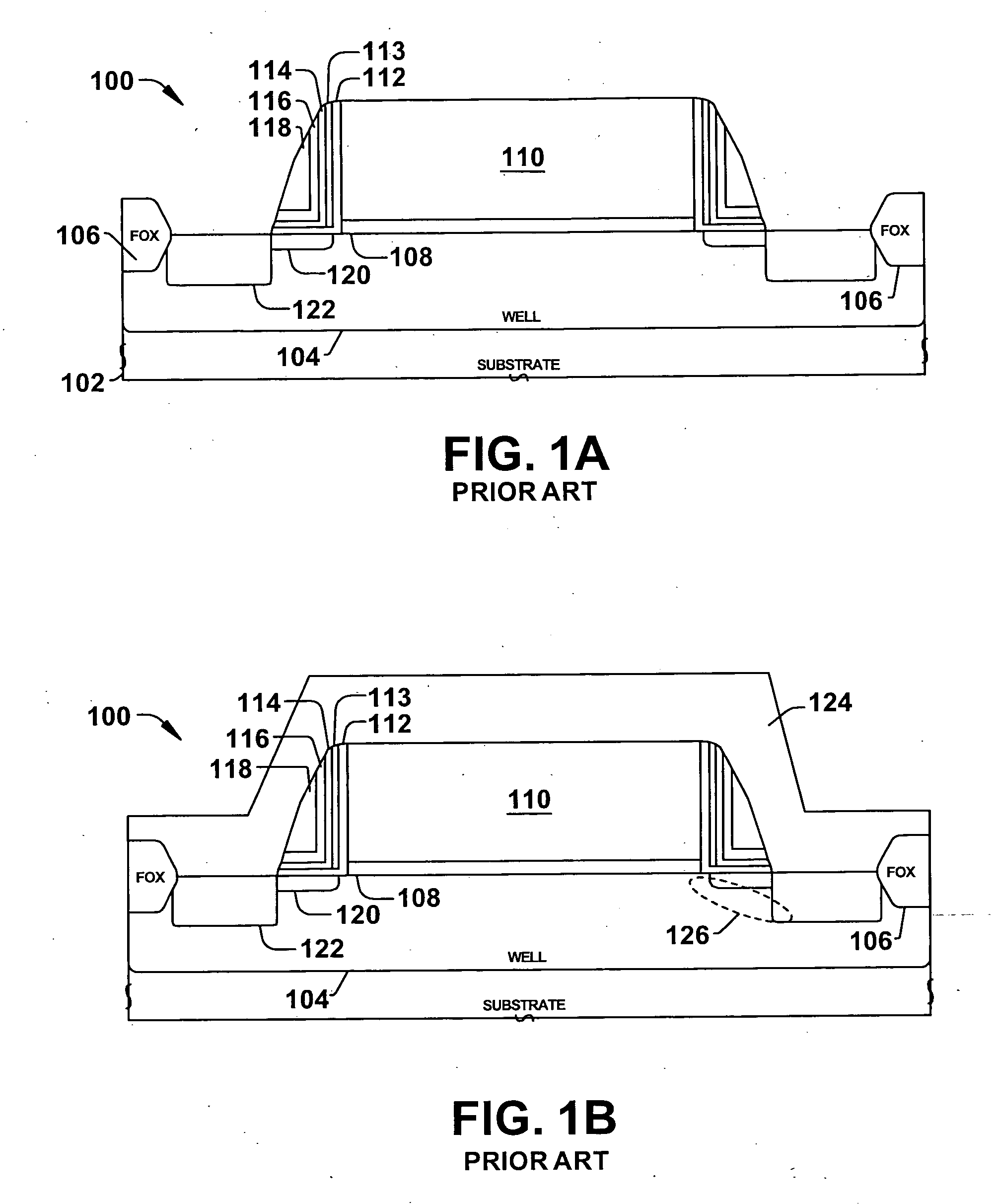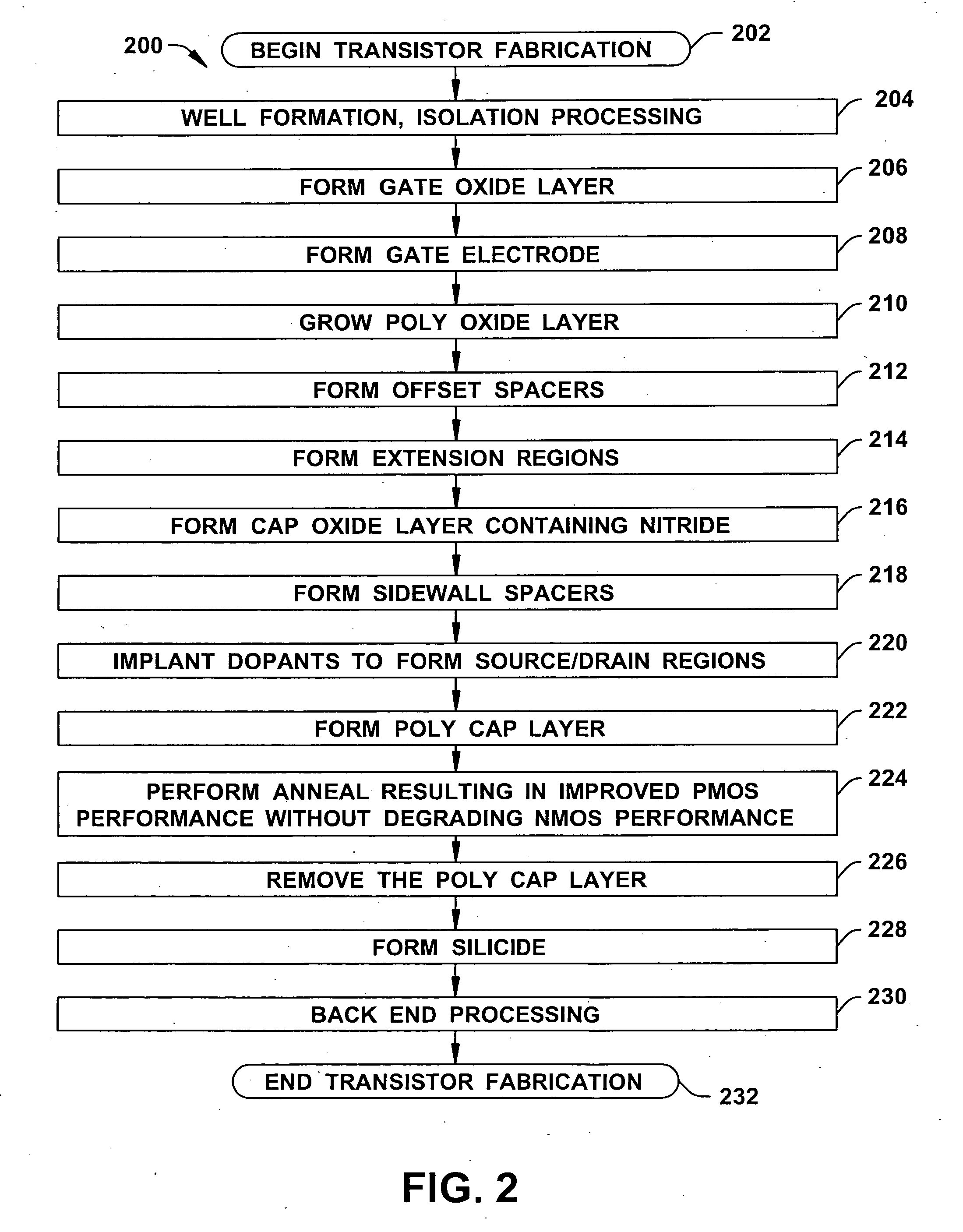Integration scheme to improve NMOS with poly cap while mitigating PMOS degradation
a technology of pmos and polycaps, applied in the field of integrated schemes to improve nmos with polycaps while mitigating pmos degradation, can solve problems such as the performance and achieve the effects of improving the performance of nmos transistor devices, facilitating semiconductor device fabrication, and reducing the degradation of pmos transistor devices
- Summary
- Abstract
- Description
- Claims
- Application Information
AI Technical Summary
Benefits of technology
Problems solved by technology
Method used
Image
Examples
Embodiment Construction
[0014] One or more implementations of the present invention will now be described with reference to the attached drawings, wherein like reference numerals are used to refer to like elements throughout, and wherein the illustrated structures are not necessarily drawn to scale. The invention provides transistor structures and methods in which transistor mobility is improved while reducing masks employed in fabrication thereof.
[0015]FIGS. 1A and 1B illustrate a conventional PMOS semiconductor device formed with a conventional cap oxide layer. FIG. 1A depicts the conventional semiconductor device subsequent to sidewall formation and FIG. 1B depicts the conventional semiconductor device after formation of a capped poly layer and performance of an anneal. The inventors of the present invention appreciate that the presence of the caped poly layer causes hydrogen diffusion during the anneal resulting in an undesirable dopant profile, particularly laterally.
[0016] As stated above, FIG. 1A ...
PUM
 Login to View More
Login to View More Abstract
Description
Claims
Application Information
 Login to View More
Login to View More - R&D Engineer
- R&D Manager
- IP Professional
- Industry Leading Data Capabilities
- Powerful AI technology
- Patent DNA Extraction
Browse by: Latest US Patents, China's latest patents, Technical Efficacy Thesaurus, Application Domain, Technology Topic, Popular Technical Reports.
© 2024 PatSnap. All rights reserved.Legal|Privacy policy|Modern Slavery Act Transparency Statement|Sitemap|About US| Contact US: help@patsnap.com










